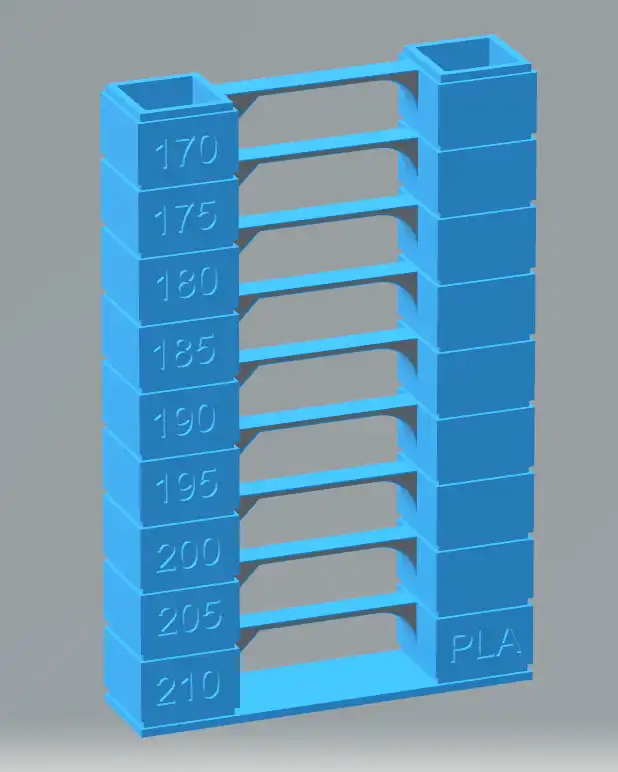In this article, we will delve into how temperature influences the 3D printing process and how we can adjust it to achieve the best results.
When we talk about 3D printing, temperature is one of the most critical parameters that we must control (probably the most).
In the end, it makes sense; we are depositing melted material. So temperature affects directly the quality of the print, mechanical strength… and ultimately whether your part turns out well or a mess 😜.
So let’s see how we can control this parameter and how it affects our 3D prints 👇.
Why is temperature important in 3D printing?
In an FDM printer, the material is melted in the hotend (the hot nozzle) and extruded in layers to form the final part.
If the temperature is not right, all sorts of problems can arise. Let’s take a look at some of them:
Temperature too low
If the temperature is too low for the material being used, several problems can arise, such as:
- Poor adhesion between layers: The filament may not melt enough, resulting in weak adhesion between layers, making the part fragile and prone to delamination.
- Inconsistent extrusion: The low temperature can make it difficult to extrude the filament, creating a rough and uneven surface on the part.
- Extruder clogging: When the filament does not fully melt, it can build up in the extruder, causing jams and print failures.
Temperature too high
On the other hand, a temperature that is too high can also cause problems, such as:
- Overheated filament: If the filament is overheated, it can become too liquid, leading to issues like stringing on the part.
- Deformations or warping: If the temperature is too high, the material may cool unevenly, causing deformations in the part.
- Surface defects: High temperatures can cause bubbles, burns, or marks on the surface of the part, affecting both its appearance and structural integrity.
Material temperature
One of the reasons we often forget that temperature is the most important parameter in 3D printing is that the range depends on the material we are using.
Each material has an optimal temperature range for its extrusion. Here is a list of the most common filaments and their recommended temperatures:
PLA (Polylactic Acid): 190°C - 220°C
PLA is one of the easiest materials to print. It is biodegradable and does not require a heated bed, although a bed temperature between 50°C and 60°C can improve adhesion.ABS (Acrylonitrile Butadiene Styrene): 220°C - 250°C
ABS is stronger than PLA but also more difficult to print. It requires a heated bed at 90°C - 110°C to avoid warping.PETG (Glycol-Modified Polyethylene Terephthalate): 220°C - 250°C
PETG combines the ease of printing of PLA with the strength of ABS. It is less prone to warping but can be sticky, so a heated bed at 70°C - 80°C is recommended.TPU (Thermoplastic Polyurethane): 220°C - 250°C
TPU is a flexible material that requires slow and precise extrusion. Bed temperature is not critical but is recommended to be between 50°C and 60°C.Nylon: 240°C - 260°C
Nylon is a strong and durable material, but it is hygroscopic (absorbs moisture) and requires a heated bed at 70°C - 100°C.
In other words, we basically have the temperature conditioned to a range, depending on the material. So it seems we don’t have much room for maneuver.
But believe me, a 30º difference is having a lot of room for maneuver.
Fine-tuning the hotend temperature
The recommended temperatures are a good starting point, but each printer and each spool of filament may have slight variations.
That is why it is advisable to conduct temperature tests to find the optimal value.
A common way to do this is to print a temperature tower, which is a model that changes the hotend temperature with each layer.

This way, we can see how temperature affects print quality and choose the temperature where we see the fewest defects (such as stringing, bubbles, or poor adhesion). This allows us to see how temperature affects print quality and choose the best option.
Ambient temperature
Although it is not always taken into account, ambient temperature can also affect 3D printing.
In cold environments, the filament can cool too quickly, leading to adhesion problems and warping. On the other hand, in very hot environments, the filament may not solidify quickly enough.
You might say, “well, but I can’t control ambient temperature.” No, that’s why it’s not a good idea to place a 3D printer outdoors 😜.
There are various measures we can take to ensure that ambient temperature affects our 3D printer as little as possible. Some of them are:
- Choose a suitable location: Such as a climate-controlled room, without too many drafts or humidity.
- Enclosed printers: It is always advisable to use an enclosed printer or build a casing to maintain a stable temperature.
- Away from heat and cold sources: Make sure the printer is not exposed to heat or cold sources, such as next to a radiator, windows, or air conditioning.